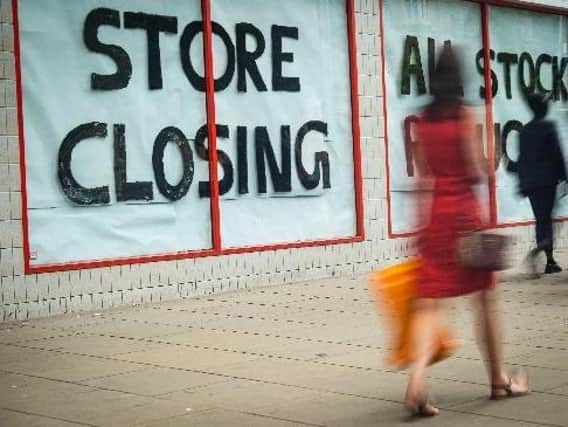Massive blow to North West as shops disappear from high streets


And the North West has been particularly badly hit.
PwC has released the latest findings of its store opening and closures data compiled by the Local Data Company.
In total, 7,655 shops opened in Great Britain, compared to 17,532 closures, a net decline of 9,877.
Advertisement
Hide AdAdvertisement
Hide AdAlthough a decline was to be expected in a pandemic this is the worst ever seen with an average of 48 chain stores closing every day, and only 21 opening.
The findings starkly compare to 2015, which showed North West store openings at 1,399 and store closures at 1,614 – a net fall of just 215 stores.
This is compared to 2020 which saw a net fall in the region of 1,133 outlets.
The categories of outlets most affected by closures across the North West were fashion retailers, betting shops, pubs and bars, food to go, electrical shops, banks and financial services, estate agents, restaurants and mobile phone shops.
Advertisement
Hide AdAdvertisement
Hide AdMark Whittle, manager of Preston City Centre Business Improvement District, said: “Whilst the figures do not make great reading for high streets, it does not come as a surprise.
“Conditions have been tough for retail in our town and city centres for several years. The restrictions brought about by the pandemic have hit the retail, hospitality, and leisure sectors especially hard.
“ With these sectors making up the majority of the high street, it was sadly inevitable that there would be a steep increase in closures due to the pandemic and consumer habits changing.”
He added: “The high street needed to evolve but what was expected to be a gradual change, now has to be much more rapid.
Advertisement
Hide AdAdvertisement
Hide Ad“Our town centres are likely to become focused on leisure and experience, with retail as a key part of the mix.
“Hopefully, this will enable towns to remain vital commercial hubs with a unique flavour brought by businesses who meet the demand of the future customer”.
Paul Foster, Development Manager at the Blackpool-hewadquartered Federation of Small Businesses, said: “These figures make for difficult reading.
"We know that our high streets were under pressure pre-covid, and despite many of these businesses receiving grant support in the last 12 months a lot of them will have taken additional debt too to keep trading, so they have a lot of catching up to do in terms of making sales to even start to break even once lockdown ends.
Advertisement
Hide AdAdvertisement
Hide Ad"We need our Lancashire towns and cities to have viable plans for future sustainability which rebuild our high street economies and give us a fit for purpose retail and leisure offer.”
The report says that worryingly the real impact of the pandemic is yet to be felt as some stores ‘temporarily closed’ during lockdowns, but considered as open in the research, are unlikely to return.
But while we wait to see the full impact of Covid-19 on store closures, its effect on consumer behaviours are driving changes.
Retail parks have seen the smallest number of net closures of any location (58) in the North West, compared to high streets (405), shopping centres (221) and standalone stores (449).
Advertisement
Hide AdAdvertisement
Hide AdFootfall was already holding up better in retail parks before the pandemic due to their investment in leisure.
Some retail parks have benefitted by being anchored by essential retailers that have remained open, even during the tightest restrictions
But it’s also because they’re considered safer in the current environment: free parking means it’s possible to drive to the location and avoid public transport, outdoor areas mean reduced indoor mixing and larger units allow for better social distancing measures.
Shopping centres, by contrast, are often poorly located for consumers who want to shop local and travel less to city centre and are more likely to host fashion retailers and chain restaurants, which are the number one and thee most hard hit categories for net closure in 2020.
Advertisement
Hide AdAdvertisement
Hide AdMeanwhile, the drop off in high-street footfall has affected those multiple retailers located on high streets, particularly those in large city centres.
There is greater regional disparity this year. Looking at absolute figures, London, South East and the North West have seen the most closures, unsurprising given these regions have more chain stores.
However, London has undoubtedly been hit harder than other regions, says the study.